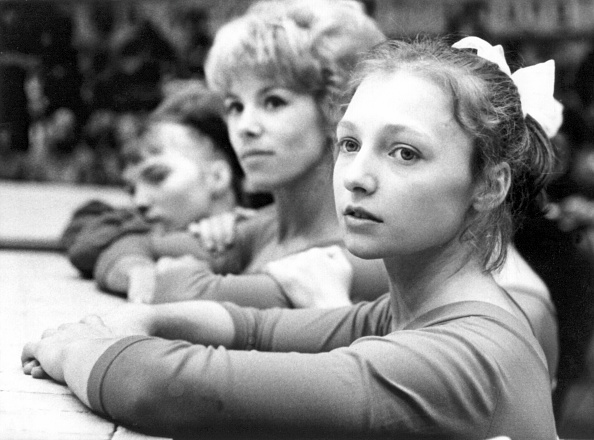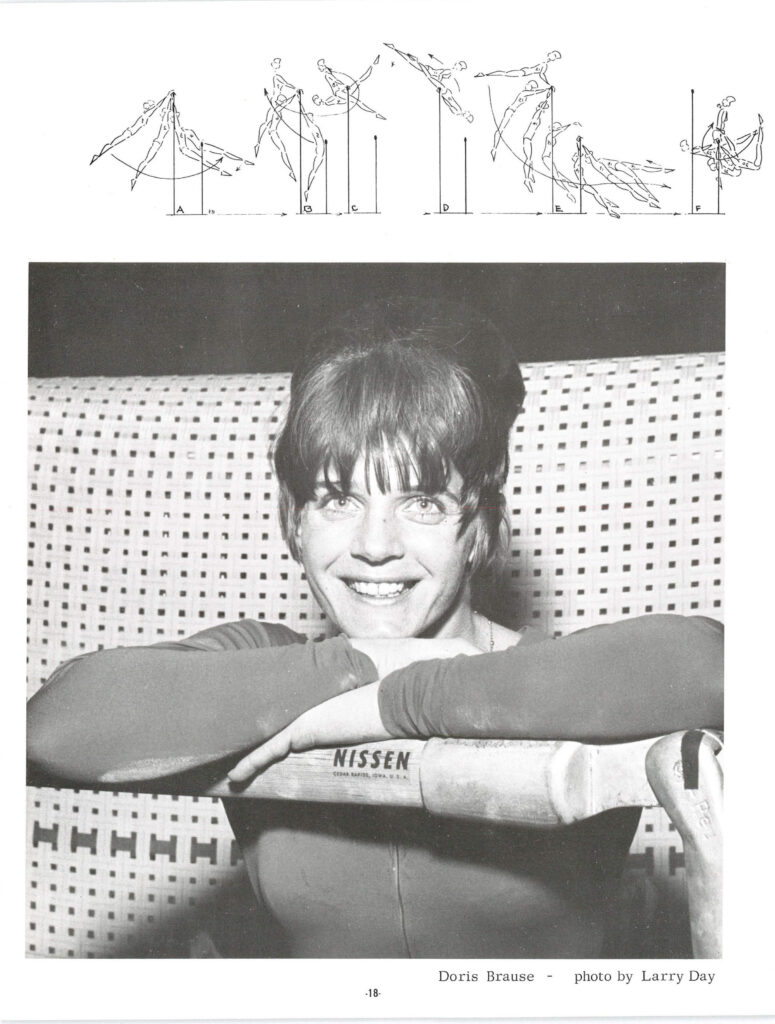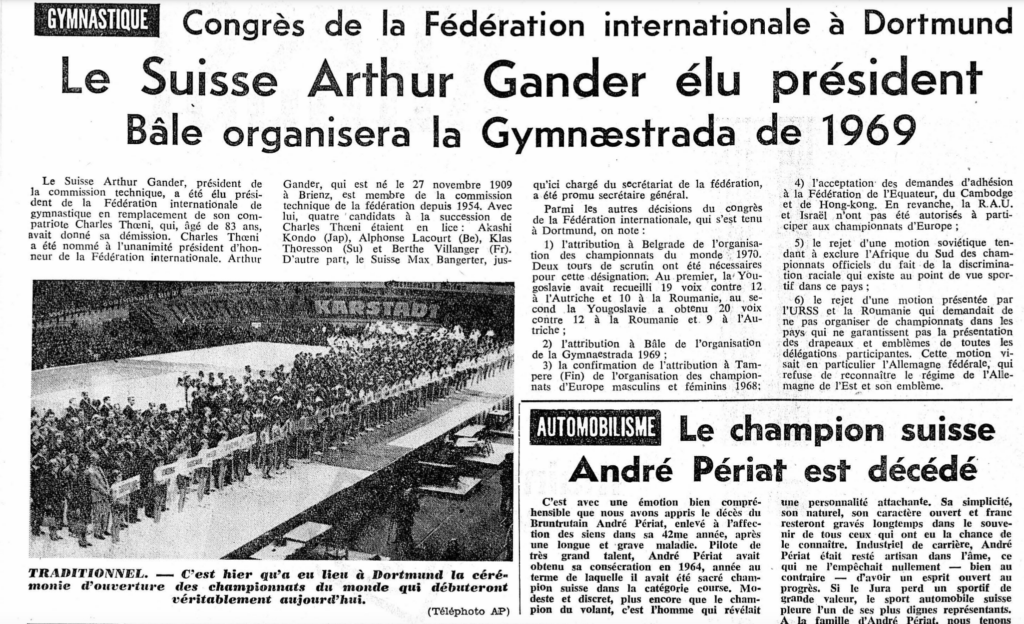If you’re reading this site, you’re a big, ol’ gym nerd at heart. Now, it’s time to see just how much of a gym nerd you are. Take the quiz below to find out.
Category: 1966
Most gym nerds know about Věra Čáslavská’s political stance on the podium at the 1968 Olympics in Mexico City. (If you don’t, Google it. There’s plenty that has been written about it.)
But did you know that some saw tension between Čáslavská and the Soviet gymnasts already at the 1966 World Championships?
On October 1, 1966, the Feuille d’avis de Neuchatel published a column called “Le sport vu par une femme” (“Sports as Seen by a Woman”), chastizing Věra Čáslavská for her actions on the podium. Here’s what it said…
The World Championships are a long slog for judges. The 1966 World Championships in Dortmund were no exception, and, at the time, many believed that the length of the competition impacted the judging.


Recap: Doris Brause’s uneven bars routine created quite the sensation at the 1966 World Championships. When she received a 9.766 on bars, the crowd stopped the meet for over an hour, hoping to coerce the judges into raising her score.
The judges didn’t budge.
But uneven bars would never be the same again.
The gymnastics community was buzzing about the women’s competition in Dortmund in 1966. The Soviet Union brought a younger team to the competition, which raised several questions.
Could the Soviets continue to win the team competition?
Could stalwarts like Čáslavská and Latynina continue to dominate the sport?
*Insert dramatic music*
Let’s find out…
While Olga Korbut and Nadia Comăneci are often credited with ushering in the era of teenage gymnasts, that’s not the origin story that circulated in the Soviet Union in the 1960s.
Back story: The Soviet Union had relied on adult women in their 20s and 30s for their gymnastics teams. At the 1958 World Championships, their youngest gymnasts were 21 (Astakhova and Kalinina). Czechoslovakia, on the other hand, brought a teenager who had star power.
Čáslavská’s debut: In 1958, 16-year-old Věra Čáslavská made her international debut, winning a team silver at the World Championships in Moscow. And, as the tale goes, it was in that moment that the Čáslavská piqued the interest of the spectators and Soviet coaches alike.
What follows is a translation of a May 20, 1967 article from Неделя (Nedelia), which was the Sunday supplement to Известия (Izvestii︠a︡). (Thanks to Nico for his assistance with the translation.)
As Arthur Gander said during the technical committee meeting, “Finally, gentlemen, a gymnast who shows a routine with none of the elements of risk, originality, and difficulty should never win a world championship.”
Let’s dive into the 1966 World Championships and see if Gander’s words came true.
In my post about the men’s technical committee meeting, I noted that Arthur Gander had been voted the next president of the FIG, replacing Charles Thœni.
Let’s take a look at some of the key decisions that were made during the FIG Congress in Dortmund.
As we go through the information, try to guess which decisions became a thorn in Arthur Gander’s side.

1966 was a big year. Charles Thoeni, the president of the FIG, resigned for health reasons. At the 45th Congress, Arthur Gander, president of the Men’s Technical Committee, was elected president of the FIG.
Also, it was the year that “risk, originality, and virtuosity” would become the guiding principle in gymnastics for years to come. Arthur Gander made that perfectly clear during the technical committee meeting and judges course.
Here are some notes from that meeting. They are based on Thomas Maloney’s article in Modern Gymnast, November 1966.
If you’re reading this website, you probably have an affinity for compulsory routines. Heck, if you’re like me, you might even want to learn these old routines.
Well, I have good news for you: I have the written text for the women’s compulsories at the 1966 World Championships in Dortmund.
Here ya go…